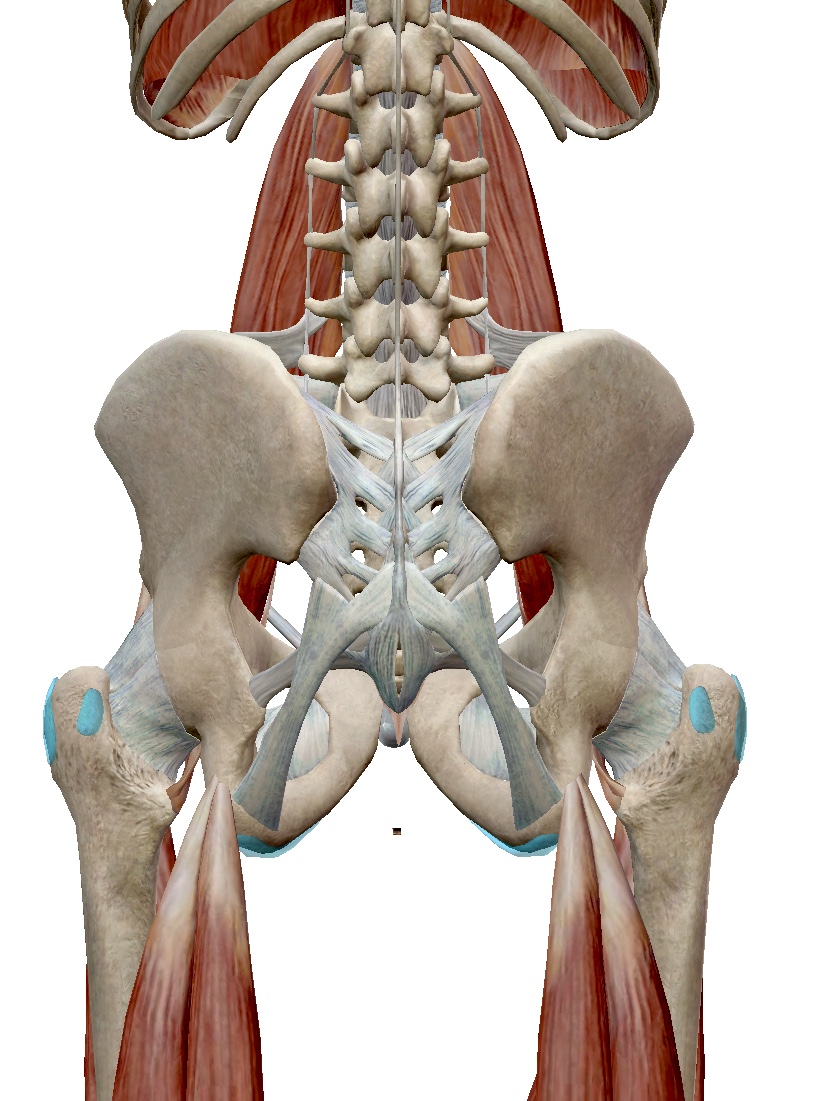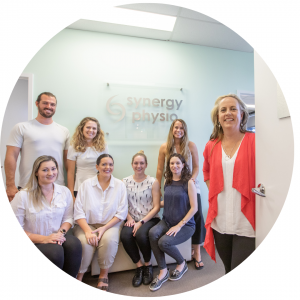- Are you experiencing buttock pain or discomfort when you’re sitting especially if you are on hard surfaces?
- Is your pain preventing you from sitting comfortably to enjoy a meal with friends or work on the computer?
 You might have hamstring tendinopathy!
You might have hamstring tendinopathy!
Hamstring tendinopathy is usually experienced as pain or tenderness directly on the sitting bone, most noticeable with sitting on hard surfaces. Hamstring tendinopathy is a condition that usually starts gradually, and is often not painful during activities, but more commonly after activities such as long walks or hamstring stretches.
So- what is hamstring tendinopathy and how can we treat it?
Tendinopathy is a term that is used to describe changes in the tendon likened to weakness, or wear and tear. We used to describe this as ‘tendonitis’, however research has more recently revealed that chronic tendon pain this is NOT an inflammatory process but instead a process of tendon overload which initially cause reactive changes to the tendon cells, that in turn can become signs of tendon weakness.
Tendons in the body are like thick strong ropes that attach muscles onto bone. The springy hamstring muscle turns into a thick strong tendon (rope) that connects onto the sitting bone. Much like the springy calf muscle turns into a thick strong Achilles tendon (rope) before attaching onto the heel bone.
Muscles are designed to be springy, to stretch and recoil. Tendons are designed to be thick and strong, firm places of attachment. In the presence of tendinopathy, the tendon can show signs of weakness, much like a frayed rope. If you imagine a frayed rope- you don’t want to overstretch or overload it, but take the pressure off and perhaps stitch some new fibres into it so it becomes strong again.
When the hamstring tendon is showing signs of tendinopathy, it will often be tender right at its attachment point which is on the sitting bone (ischial tuberosity) of the pelvis. A physiotherapist can test if you have tendinopathy, as there can be many other reasons for buttock pain!
Why do some people get tendinopathy?
There can be many varied reasons for developing this painful condition. Usually its related to what’s known as ‘tipping the balance”. If you can imagine balance scales- on one side you have “load capacity” which means- how much strength your tendon has! On the other side, you have “daily load” – which means the amount of activity, exercise, stretching and loading you are creating on the tendon.
When the balance is relatively symmetrical, we can perform daily activities and our tendon has enough strength to meet our demands.
However, there can be times when we rapidly increase our daily load demands- such as starting a running program, going on a long hike, sitting too long on a plane or bike which can compress the tendon against the bone or starting a new yoga practice. If our tendon has not yet had the chance to build strength to meet the new demands- the balance can tip creating pain. Tendons will always adapt to new loads but sometimes that process can be slow and if we push too hard too quickly our tendons can complain.
There are also times when our “load capacity” might diminish. Such as when we have been unwell, had surgery, been resting too much and even a change in hormone levels such as during menopause. This can result in a slight drop in tendon strength- and if you keep trying to do your daily activities as normal without a period of adjustment the balance scales can tip and contribute to pain.
Another reason for hamstring tendon pain can be weakness in the surrounding muscle team that can contribute to overload. One of the main muscles that helps the hamstring are the gluteals. So if you have weakness in your hips and gluteals, sometimes the hamstring tries to help out and then gets overloaded.
All of these circumstances can contribute to the onset of tendon irritation.
So how do we manage hamstring tendinopathy?
Like a frayed rope, the first step is to avoid overloading or stretching it over the sitting bone. This might mean reducing long walks and avoiding hamstring stretches initially until we start building on strength. It also means reducing your sitting load as this compresses the irritated tendon over the bone, much like stretching a weak rope over the edge of a rock. Uses sit-stand desks at work, a wedge cushion to elevate your hips and softer surfaces for sitting can be the first steps.
The next step is to start a progressive strengthening program, including isometric exercises. These are very specific exercises that should be guided by your physiotherapist – you can try this one here as a starting point.
Why is tendon recovery so slow?
The repair and recovery process for tendons can unfortunately be notoriously slow. All tissues in the body repair and rebuild at different rates. Skin heals very quickly- if I cut my skin it will usually be healed within a few days. Bones are slower- if I break a bone it will take generally 6 weeks of doing all of the right things (such as wearing a plaster cast) before it is healed. Tendons can be slower than bones. So, if you do have signs of hamstring tendinopathy you will have to have patience with your recovery and do all of the right things to assist the process.
But I was told I had “bursitis”
A bursa is simply a sack of fluid designed to protect boney points. You have them all over your body- your elbows, your knees, your heels and your hips. If a nearby tendon is showing signs of weakness or fraying, often the nearby bursa can swell up to try and protect. The two conditions almost always go hand in hand. However addressing the bursa will not fix the problem if you don’t also start rebuilding the tendon with a strength program! This can often be why cortisone injections provide temporary relief only- the injections can help bursa swelling but will do very little to restore tendon health.
What next?
- Avoid hamstring stretches. Want to know what to change in your yoga practice? Click here!
- Minimise your sitting while you try to recover- use a sit stand desk at work
- If you do have to sit- try a wedge cushion to elevate your hips
- Start a slow strengthening program with the guidance of your local physio! Start with this exercise here
- Build on the support muscles such as your gluteals – learn more here
- Remember to get an accurate diagnosis for your pain as there can be many reasons for buttock pain!

Like learn more? Our team here at Synergy Physio offer expert knowledge and care for lower back, spinal, hip and pelvic pain. We look forward to helping you understand your pain and what to do about it! Recover from your pain and get back to doing the things you love.
Like to book and appointment? Simply book online, or contact us on 07 5448 3369

Thank you I learned a lot from this article. Much appreciated.
Our pleasure! Glad it was helpful!
I have had a sore area right under my seat bone since March of this year. There are no physiotherapists in Michigan where I live.
It’s getting worse instead of better.
Can I use some KT tape for support?
It depends on what is causing your symptoms. But if the cause is hamstring tendinopathy then the best steps are limit sitting, to use a wedge cushion when sitting (so your hips are higher than knees) and to start a tendon strengthening program. Getting a full assessment is always recommended to determine all of the potential causes.